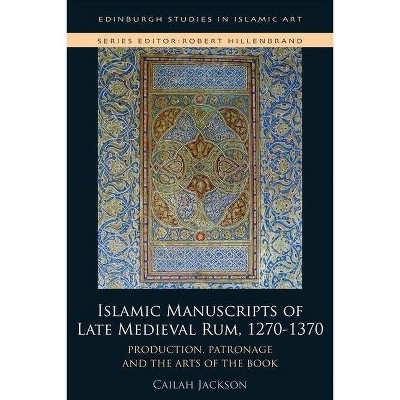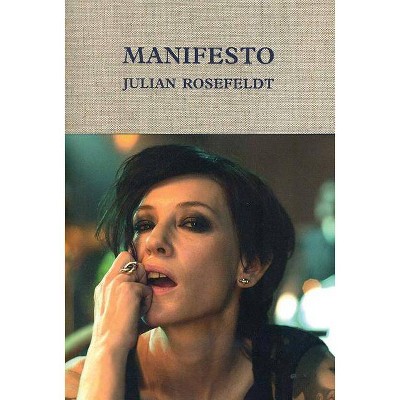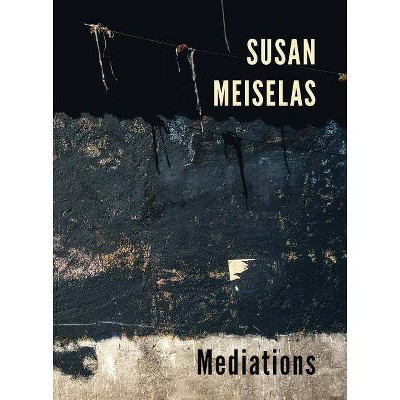The Making of the Artist in Late Timurid Painting - (Edinburgh Studies in Islamic Art) by Lamia Balafrej (Hardcover)

Similar Products
Products of same category from the store
AllProduct info
<p/><br></br><p><b> About the Book </b></p></br></br>Centred on late Timurid manuscript painting (ca. 1470-1500), this book reveals that pictures could function as the painter's delegate, charged with the task of centring and defining artistic work, even as they did not represent the artist's likeness.<p/><br></br><p><b> Book Synopsis </b></p></br></br>In the absence of a tradition of self-portraiture, how could artists signal their presence within a painting? Centred on late Timurid manuscript painting (ca. 1470-1500), this book reveals that pictures could function as the painter's delegate, charged with the task of centring and defining artistic work, even as they did not represent the artist's likeness. Influenced by the culture of the majlis, an institutional gathering devoted to intricate literary performances and debates, late Timurid painters used a number of strategies to shift manuscript painting from an illustrative device to a self-reflective object, designed to highlight the artist's imagination and manual dexterity. These strategies include visual abundance, linear precision, the incorporation of inscriptions addressing aspects of the painting and the artist's signature. Focusing on one of the most iconic manuscripts of the Persianate tradition, the Cairo Bustan made in late Timurid Herat and bearing the signatures of the painter Bihzad, this book explores Persian manuscript painting as a medium for artistic performance and self-representation, a process by which artistic authority was shaped and discussed.<p/><br></br><p><b> From the Back Cover </b></p></br></br>The first exploration of how artists represented artistic work and authorship in Persian painting In the absence of a tradition of self-portraiture, how could artists signal their presence within a painting? Centred on late Timurid manuscript painting (ca. 1470-1500), this book reveals that pictures could function as the painter's delegate, charged with the task of centring and defining artistic work, even as they did not represent the artist's likeness. Influenced by the culture of the <i>majlis</i>, an institutional gathering devoted to intricate literary performances and debates, late Timurid painters used a number of strategies to shift manuscript painting from an illustrative device to a self-reflective object, designed to highlight the artist's imagination and manual dexterity. These strategies include visual abundance, linear precision, the incorporation of inscriptions addressing aspects of the painting and the artist's signature. Focusing on one of the most iconic manuscripts of the Persianate tradition, the Cairo <i>Bustan</i>, made in late Timurid Herat and bearing the signatures of the painter Bihzad, this book argues that Bihzad's paintings defined authorship as making: at once an imaginative process and a manual endeavour. Key Features - The first book-length study of artistic self-reflection in Islamic art - Expands artistic self-representation beyond self-portraiture to consider how the artist could be represented through the symbolic possibilities of the medium - Explores the relationship between Persian painting, historical modes of visual experience at the <i>majlis</i> and conceptions of authorship in art historiographical writings - Examines a series of hitherto unstudied features of Persian painting, including the representation of epigraphic inscriptions and the painter's signature - Provides the first complete analysis of one of the most important manuscripts in the history of Persianate book arts, the Cairo <i>Bustan</i> Lamia Balafrej is Assistant Professor of Art History at the University of California, Los Angeles.<p/><br></br><p><b> Review Quotes </b></p></br></br><br><br>"This stimulating and original study draws on both the antecedents and the legacies of Behzad's art from the 14th to the 16th century in Iran and Transoxiana and will prompt a fresh look at our appreciation of Persian miniature painting. The study places the Bustan manuscript in a sort of shifting continuum of tradition, response and innovation that both exalted and obscured the individuality of the artist". -- Charles Melville, Pembroke College, Cambridge<p></p><br>"An impressive and compelling work of scholarship that promotes a radical reorientation for the study of illustrated Persian manuscripts. At the same time it offers a detailed investigation, through original perspectives, of the paintings in a celebrated, and hitherto inadequately studied volume produced at the court of the last Timurid ruler Sultan Husayn Bayqara in Herat... This book will be of enormous interest to art historians and Islamic studies scholars in general and specialists in Persian painting in particular, who will appreciate the author's sophisticated approach and multi-faceted readings of the Bustan paintings - so long-admired and yet so cursorily-studied". -- Marianna Shreve Simpson, Visiting Scholar, University of Pennsylvania<p></p><br><br><p/><br></br><p><b> About the Author </b></p></br></br><p>Lamia Balafrej is Assistant Professor of Art History at the University of California, Los Angeles.<p>
Price History
Price Archive shows prices from various stores, lets you see history and find the cheapest. There is no actual sale on the website. For all support, inquiry and suggestion messages communication@pricearchive.us



















